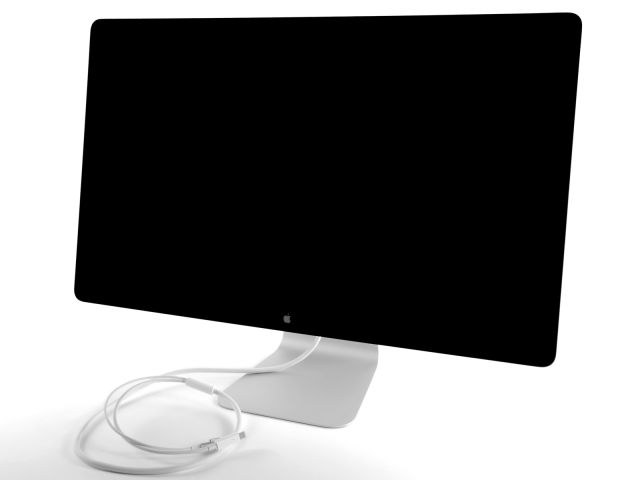The Pirate Bay and other leading torrent sites will be eventually blocked in Australia but the mechanics are far from decided. This week rightsholders and ISPs have been in court fighting over the details. Predictably they’re poles apart, and still arguing over who will pay.
Source: TF, for the latest info on copyright, file-sharing, torrent sites and ANONYMOUS VPN services.
 After new legislation was passed last year, the first site-blocking cases were filed in Federal Court during the early part of 2016.
After new legislation was passed last year, the first site-blocking cases were filed in Federal Court during the early part of 2016.
Two major industry players are putting the legislation to the test, with Roadshow Films (the movie division of Village Roadshow) and TV giant Foxtel both seeking to have several pirate sites blocked at the ISP level.
Foxtel wants to render The Pirate Bay, Torrentz, isoHunt and TorrentHound inaccessible in Australia. Roadshow is targeting streaming portal Solarmovie.
After a hearing in March, entertainment companies and local ISPs appeared in court again this week to thrash out the details. The ISPs aren’t putting up a fight against blocking per se, but there are still many practical issues to be agreed.
Section 115a of the Copyright Act states that ISPs can be forced to block an overseas “online location” if its purpose is to infringe copyright. To future-proof the law against new technologies, the term “online location” is intentionally broad. No surprise then that rightsholders argued this week that it encompasses blocking more than just IP addresses and URLs.
“[It’s] a broader shorthand reference for the idea that those responsible for the publication of the digital content at the website accessible by various URLs and IP addresses are within the broader definition of online location,” said Foxtel and Roadshow counsel Richard Lancaster.
What rightsholders are striving for is a situation similar to the one in the UK, where sites such as The Pirate Bay and KickassTorrents are blocked but proxies and other workarounds can be easily added to existing injunctions. To date, rightsholders and ISPs have been unable to reach agreement on how such a mechanism can be implemented in Australia.
Today, there was further legal argument, and not unexpectedly the ISPs are at odds with several of the studios’ demands.
To cut down on costs, rightsholders want the ability to swiftly add mirrors and proxies to existing blocking orders after formally advising ISPs. They say this will streamline the process and ensure that new blocks are put in place within 15 days.
However, ISPs Telstra, Optus, TPG and M2 say that rightsholders should have to obtain new court orders for each “workaround” site that appears.
Counsel for Telstra said that taking the official route would not entail much more work than informally filing a request with ISPs. According to an ITNews report, the rightsholders disagreed.
“This is a known problem in the real world. It will be a problem that arises in the implementation of your honor’s orders,” Richard Lancaster said.
“And we’re concerned – given this is the first [blocking] case – that a procedure be adopted that will not create a real administrative burden for the future in having to do something unnecessary and elaborate such as the [ISPs] suggest.”
Arguing the case for a simplified process, Lancaster said that in the unlikely event of a problem while executing an informal website block, any issues could be quickly be presented to the court for resolution.
“It’s not a proportionate response to the likelihood that these secondary [proxy and mirror] sites will be popping up for the copyright owners to be required to brief lawyers, pay them to prepare an affidavit, file it and serve it and so on. An out of court notification is sufficient by way of technical notice and practical operation.”
While the sides continue to butt heads over the mechanics of blocking, the not insignificant matter of who will pay also persists. Predictably, rightsholders feel that ISPs should foot the bill. ISPs think otherwise.
Arguing that ISPs are “successful and wealthy organizations,” Lancaster said that the costs of blocking are both minimal and “comfortable” for them to bear. And if ISPs are paying, that will provide them with an incentive to keep costs down.
“In England the rights holders don’t have to pay for implementation because it’s regarded as being part of the business of carrying out the business of an ISP,” Lancaster said.
“The [rights holders] can’t control the cost of implementation. If the [ISPs] bear the cost, that will encourage the most efficient and cost effective way of blocking. It’s appropriate that if the law requires that illegal or infringing content be blocked or stopped, and that requires some action on the part of [ISPs], they should bear those costs.”
And the rightsholders aren’t stopping there. Not only do they want ISPs to cover the costs of blocking, they want them to foot all of the legal bills too.
“They’re the ones that turned it into a contested hearing, putting on evidence and rounds of hearings,” Lancaster told the court.
The hearings continue.
Source: TF, for the latest info on copyright, file-sharing, torrent sites and ANONYMOUS VPN services.

 Ein zwei Kilometer langer Autobahnabschnitt in Schweden ist von Siemens mit einer Oberleitung versehen worden, damit spezielle Lkw dort Strom für ihren Elektroantrieb beziehen können. Abseits der Strecke nutzen die Hybrid-Lkw Verbrennungsmotoren. (Siemens, Technologie)
Ein zwei Kilometer langer Autobahnabschnitt in Schweden ist von Siemens mit einer Oberleitung versehen worden, damit spezielle Lkw dort Strom für ihren Elektroantrieb beziehen können. Abseits der Strecke nutzen die Hybrid-Lkw Verbrennungsmotoren. (Siemens, Technologie)  Ein zwei Kilometer langer Autobahnabschnitt in Schweden ist von Siemens mit einer Oberleitung versehen worden, damit spezielle Lkw dort Strom für ihren Elektroantrieb beziehen können. Abseits der Strecke nutzen die Hybrid-Lkw Verbrennungsmotoren. (Siemens, Technologie)
Ein zwei Kilometer langer Autobahnabschnitt in Schweden ist von Siemens mit einer Oberleitung versehen worden, damit spezielle Lkw dort Strom für ihren Elektroantrieb beziehen können. Abseits der Strecke nutzen die Hybrid-Lkw Verbrennungsmotoren. (Siemens, Technologie) 
 Trotz hoher Verluste will Blackberry weiter auf das Smartphone-Geschäft setzen. Auch die Verkaufszahlen der eigenen Geräte gehen weiter zurück. Der Blackberry-Chef hat einen Plan B parat, den er aber vorerst nicht umsetzen möchte. (
Trotz hoher Verluste will Blackberry weiter auf das Smartphone-Geschäft setzen. Auch die Verkaufszahlen der eigenen Geräte gehen weiter zurück. Der Blackberry-Chef hat einen Plan B parat, den er aber vorerst nicht umsetzen möchte. (
 Sandisk hat eine iPhone-Hülle vorgestellt, die eigenen Flash-Speicher enthält und einen Zusatzakku aufnehmen kann, um die Laufzeit des Smartphones zu verlängern. Bis zu 128 GByte Speicher lassen sich so aufrüsten. (
Sandisk hat eine iPhone-Hülle vorgestellt, die eigenen Flash-Speicher enthält und einen Zusatzakku aufnehmen kann, um die Laufzeit des Smartphones zu verlängern. Bis zu 128 GByte Speicher lassen sich so aufrüsten. ( Zwei autonome Kleinbusse fahren durch das schweizerische Sitten und befördern Fahrgäste mit maximal 20 km/h. Ein menschlicher Aufpasser kann jedoch jederzeit den Notausschalter drücken. (
Zwei autonome Kleinbusse fahren durch das schweizerische Sitten und befördern Fahrgäste mit maximal 20 km/h. Ein menschlicher Aufpasser kann jedoch jederzeit den Notausschalter drücken. (

